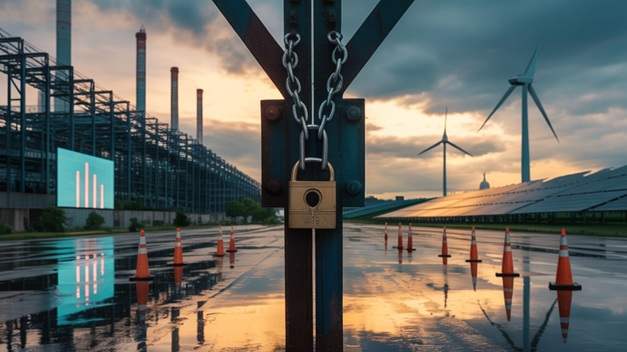If you work in a factory town or follow the EV boom, you’ve felt the vibe shift. The US clean energy sector just took another hit: companies scrapped or scaled back nearly $1.6 billion in projects in September alone, according to E2 and the Clean Economy Tracker. That pushes private‑sector cancellations and downsizing to more than $24 billion so far this year—real money, real jobs, and real consequences.

- September cuts: ~$1.6 billion in private clean energy projects canceled or downsized
- Year-to-date: $24+ billion in private cancellations
- Jobs impact: 3,000+ jobs wiped out in September; nearly 21,000 gone in 2025 so far
- Federal angle: DOE pulled nearly $8 billion from >200 federally supported projects (not included in E2’s private tally)
- Bright spots: ~$542 million in new investments announced in September, ~1,000 jobs expected
EV and battery projects are taking the hit
Four major battery, storage, and EV factory projects in Kansas, Michigan, North Carolina, and Tennessee were either abandoned or scaled back last month. Cut two EV production lines in Tennessee and Kansas, eliminating 1,600 jobs. Closed a $40 million Michigan plant (150 layoffs) and canceled a $1.4 billion North Carolina factory that would have created roughly 1,000 jobs. It’s not just a spreadsheet story. These are paychecks, mortgages, and Main Street businesses that depend on plant traffic.
| Item | Detail |
|---|---|
| Private cancellations/downsizing | ~$1.6B |
| Jobs lost (September) | 3,000+ |
| Notable projects | GM EV lines (TN, KS); Natron (MI closure; NC canceled) |
| DOE funding changes | ~$8B canceled across 200+ federal projects (separate from private tally) |
| New investments (September) | ~$542M (EV/solar parts, grid for AI data centers) |
| New jobs (September) | ~1,000 expected |
| State | Project type | Action | Reported impact |
|---|---|---|---|
| Tennessee | EV assembly | Two lines reduced | Part of 1,600 GM job cuts |
| Kansas | EV assembly | Line reduced | Part of 1,600 GM job cuts |
| Michigan | Sodium‑ion battery | Plant closed | 150 layoffs |
| North Carolina | Battery factory | Canceled | ~1,000 jobs lost (planned) |
E2’s analysis says Republican‑led districts are taking the biggest private‑sector hit so far this year, losing over $12.4 billion in investments and nearly 15,000 jobs. Democratic‑led districts have lost about $7.5 billion and 5,000 jobs. That’s not a gotcha—it’s a reminder that clean energy manufacturing has spread across red and blue ZIP codes alike.
“The loss of these projects isn’t just a setback for clean energy—it’s a setback for America’s workers and competitiveness,” said E2’s Michael Timberlake. He warns that cancellations chill future announcements, pushing capital overseas and draining opportunities from US workers. Since federal clean energy tax credits passed in August 2022, companies have announced 415 major projects across 42 states and Puerto Rico—nearly $135 billion in planned investments and about 125,000 permanent jobs. But momentum isn’t linear: 65 projects have since been canceled, closed, or scaled back. 42 of those changes happened in 2025 alone, Roughly $27 billion in investments and 30,000 jobs have been wiped from the board
Despite the gut punches, companies announced roughly $542 million in new September investments, largely in: EV and solar component manufacturing, Grid upgrades to support energy‑hungry AI data centers.
Higher interest rates make long‑lead, capital‑intensive factories harder to pencil out. Shifting incentives and uncertainty over long‑term rules spook boardrooms.China’s scale advantage and faster permitting continue to pressure US costs and timelines. EV adoption is growing, but uneven—making near‑term volumes harder to forecast.
Expect pauses and “right‑sizing” as companies re‑sequence projects and hunt for cheaper capital. Projects with strong local incentives, domestic supply chains, and clear offtake agreements are most likely to proceed. The US can still lead, but it will require policy stability, skilled labor pipelines, and faster permitting to match global competitors.
America’s clean energy buildout isn’t dead—but it’s definitely hitting speed bumps. September’s $1.6 billion in cancellations and the $24 billion year‑to‑date total are a wake‑up call. new projects are still breaking ground, and the broader post‑2022 pipeline remains massive. The challenge: keeping capital here, workers employed, and momentum steady enough to compete with China and Europe. For now, plant towns from Lansing to Knoxville will be watching the next announcement—and hoping it lands in their backyard.
Related Post




